1990 Penny Coin Value: How Much Is It Worth?
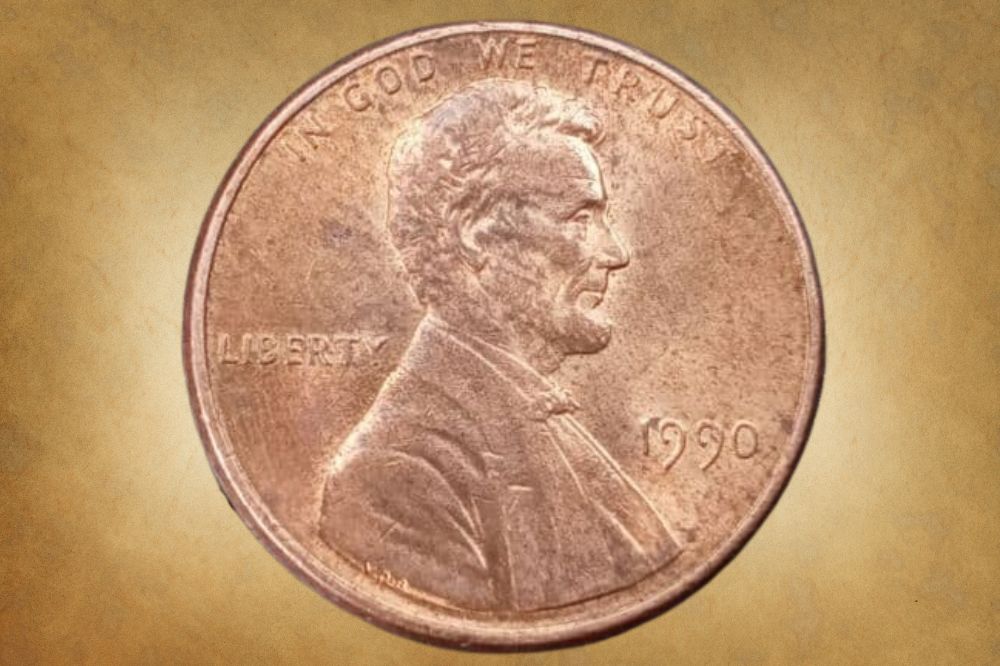
Most 1990 pennies aren’t worth more than their face value. But a few coins are collectors’ pieces and can sell for considerably more.
So how do you sort the average coins from the special ones? That’s where we can help. We’ve got everything you need to know about the 1990 penny value.
1990 Penny Value Chart |
||||
| Mint mark | Good | Fine | Extremely Fine | Uncirculated |
| 1990 Penny “D” | 1 cent | 1 cent | 10 to 25 cents | $65 to $3,000 |
| 1990 Penny “P” No Mint Mark | 1 cent | 1 cent | 10 to 25 cents | $20 to $7,200 |
| 1990 Penny “S” | None | None | None | $10 to $2,400 |
| 1990 Penny “S” No Mint Mark | None | None | None | $2,500 to $20,700 |
1990 Penny Value Guides
1990 D Penny Value
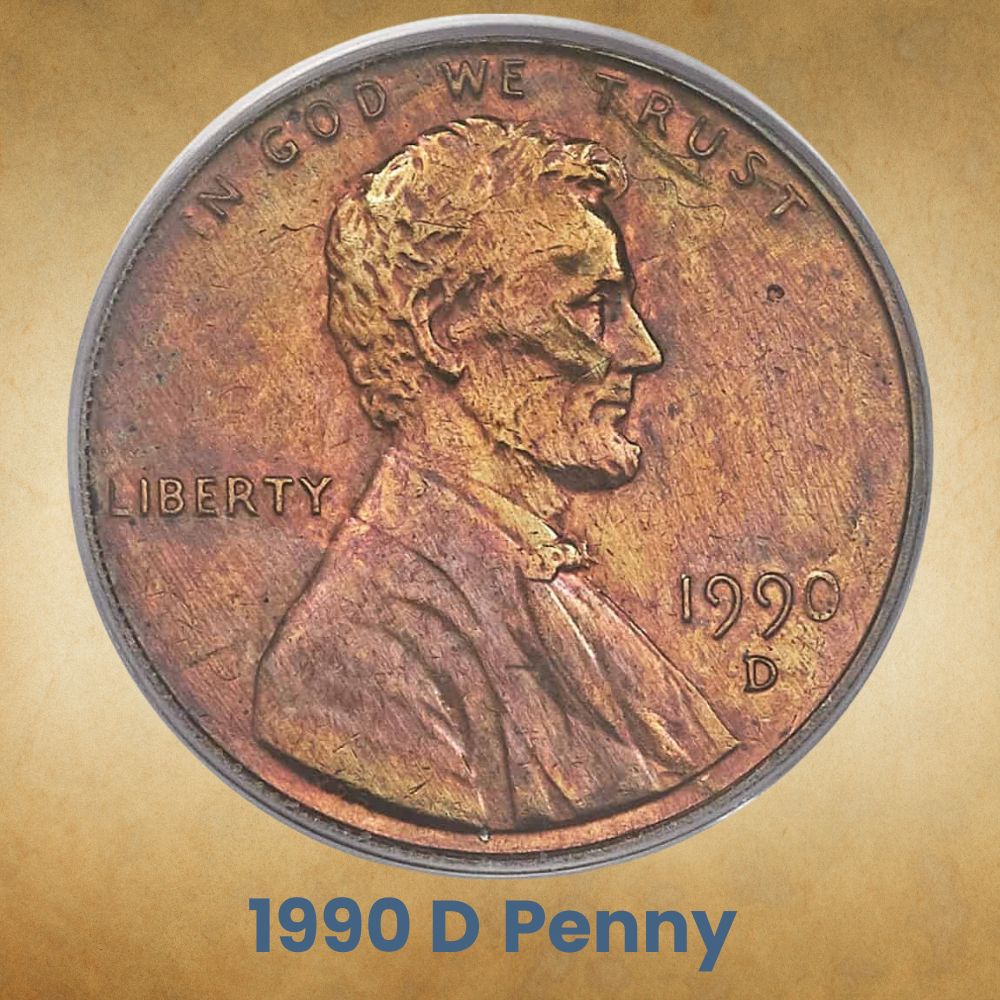
The Denver mint produced nearly 5 billion pennies in 1990. So for a particular coin to be worth more than its face value, it must have something that marks it out from the crowd.
That could be an error in production (we’ll look at some of the errors among 1990 pennies shortly). But it could also be the condition, quality and color of the coin.
The most valuable coins from any mint are those that never went into general circulation – graded “mint state” or “proof” by independent coin experts. These receive a grading of between 60 and 70, depending on their condition. A grading of 70 is awarded to a flawless coin.
Even a one point difference in grading can make a huge difference to the value of a coin. In 2021, a red toned 1990 penny minted in Denver sold for just under $3,000 on eBay. A year later, another red 1990 penny graded MS68 was sold by coin specialists Heritage Auctions for just $57.
The difference is rarity. The MS68 specimen was one of 253 graded at the same level by the PCGS. And eight coins of better quality – including the MS69 sold the previous year – were known to exist.
Prices can fluctuate over time. Another red MS69 1990 penny sold in 2015 for an auction record of $7,200.
1990 S Penny Value
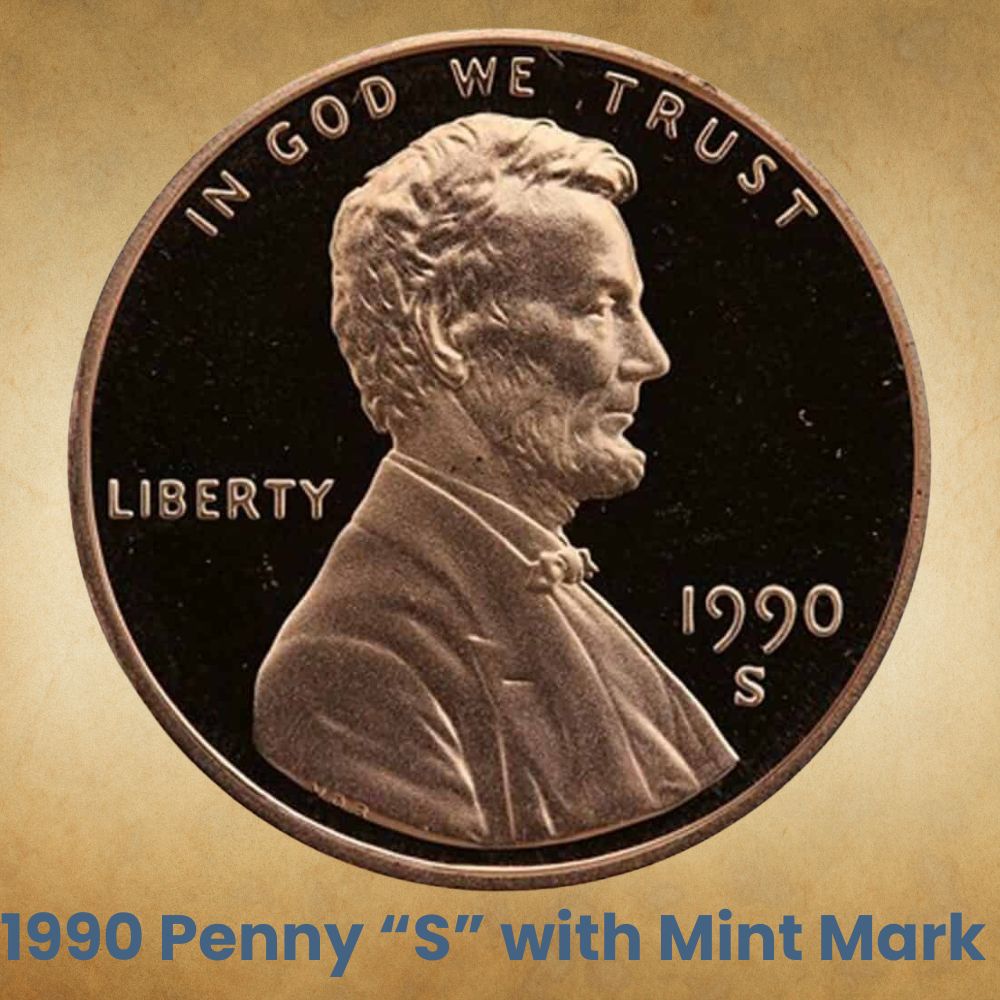
The 1990 pennies produced in San Francisco were all proofs. Over 3 million of them were minted, and most have the “S” mint mark.
Because proof coins were produced for collectors, they are usually looked after and kept in pristine condition. That means that most aren’t particularly rare. And even high-quality examples aren’t always worth huge sums.
Examples sold at auction since 2004 vary widely in price. A red coin graded PR 69 by the PCGS fetched just $6 at auction in 2014. And $5 of that price was the buyer’s premium! In contrast, a PR 70 specimen, again in a red tone, sold a decade earlier for $2,358.
1990 P Penny Value
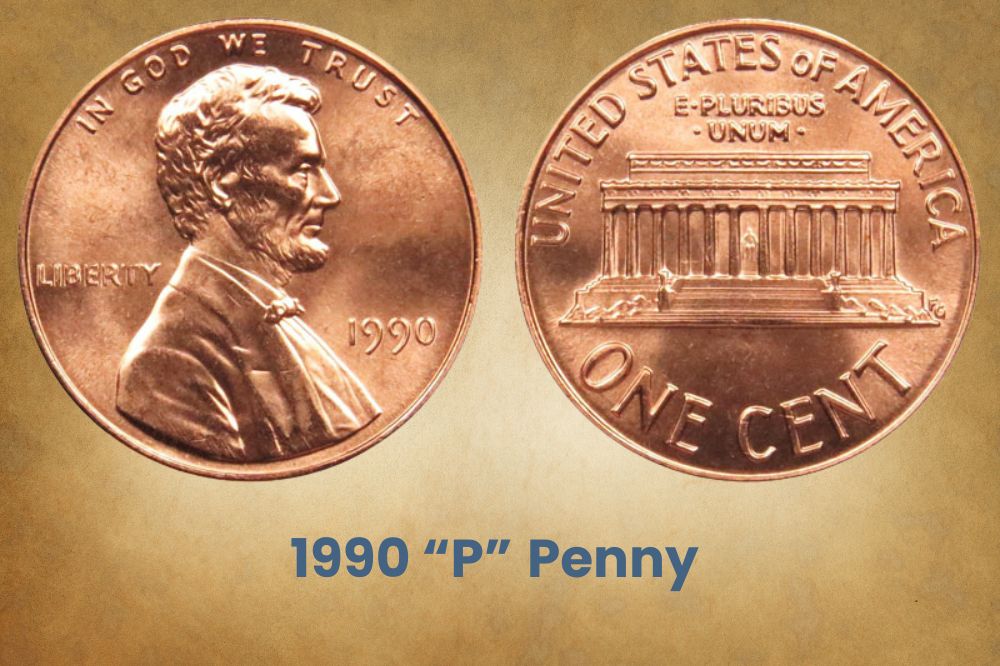
The 1990 penny minted in Philadelphia is the most common of all. It doesn’t have a mint mark, which can lead to some confusion with the legendary “no-S” 1990 penny. But it’s quite easy to tell the difference.
The Philadelphia pennies were minted in vast numbers for general circulation. They were struck on standard planchets, rather than the highly polished versions used for the San Francisco proofs. So they won’t look as glossy, and they’ll have varying degrees of wear and tear.
In most cases, they’re worth only their face value. But if you can find a superb example, it can still be very valuable.
A red version of the 1990 penny minted in Philadelphia came to auction in 2018. It had been graded MS69 by the PCGS, meaning it was tied with one other coin as the finest example of its type. It sold for $7,200.
1990 “S”, No Mint Mark Penny Value
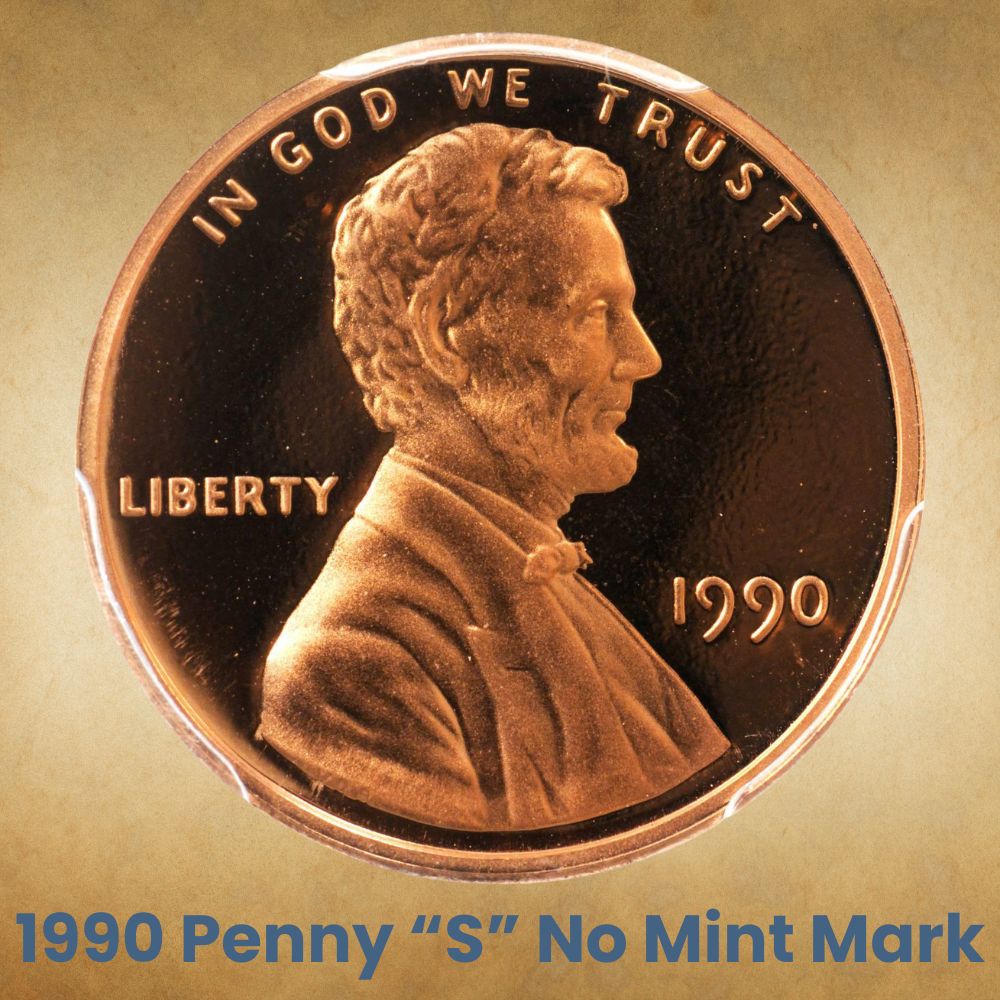
A select group of 1990 proof pennies minted in San Francisco lack the “S” mint mark. These were the result of an error. And they’re the only proof coins in the whole series of Lincoln cents where the mint mark is missing.
The mint destroyed at least 145 of the coins when the error was discovered. But around 200 had already been distributed as part of proof sets.
If you’re lucky enough to come across one, it can be worth thousands of dollars. The auction record was set in 2007 for a coin graded PR69 and designated a “deep cameo”. It fetched $20,700.
Related Posts: 16 Most Valuable Wheat Penny Errors
1990 Penny Grading
1990 Penny Errors
1990 Penny “S” No Mint Mark
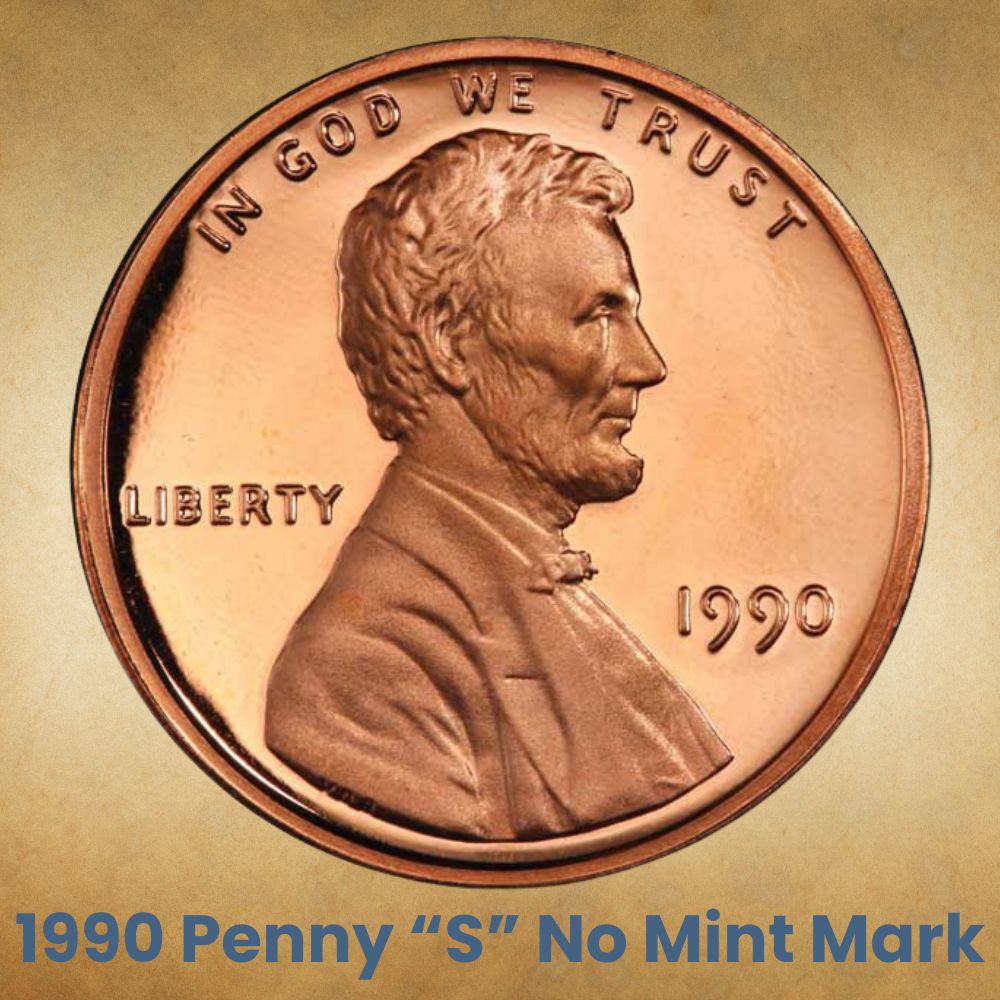
The most famous and valuable of 1990 pennies was actually the result of an error. The die was shipped to the San Francisco mint without a mint mark. And astonishingly, no-one noticed until at least 300-odd coins had been struck.
The mistake was discovered in July of that year. That’s when the Mint announced that it had destroyed 145 error coins, leaving about 200 that already been issued. Today, they’re highly sought after by collectors.
1990 Penny Double Die
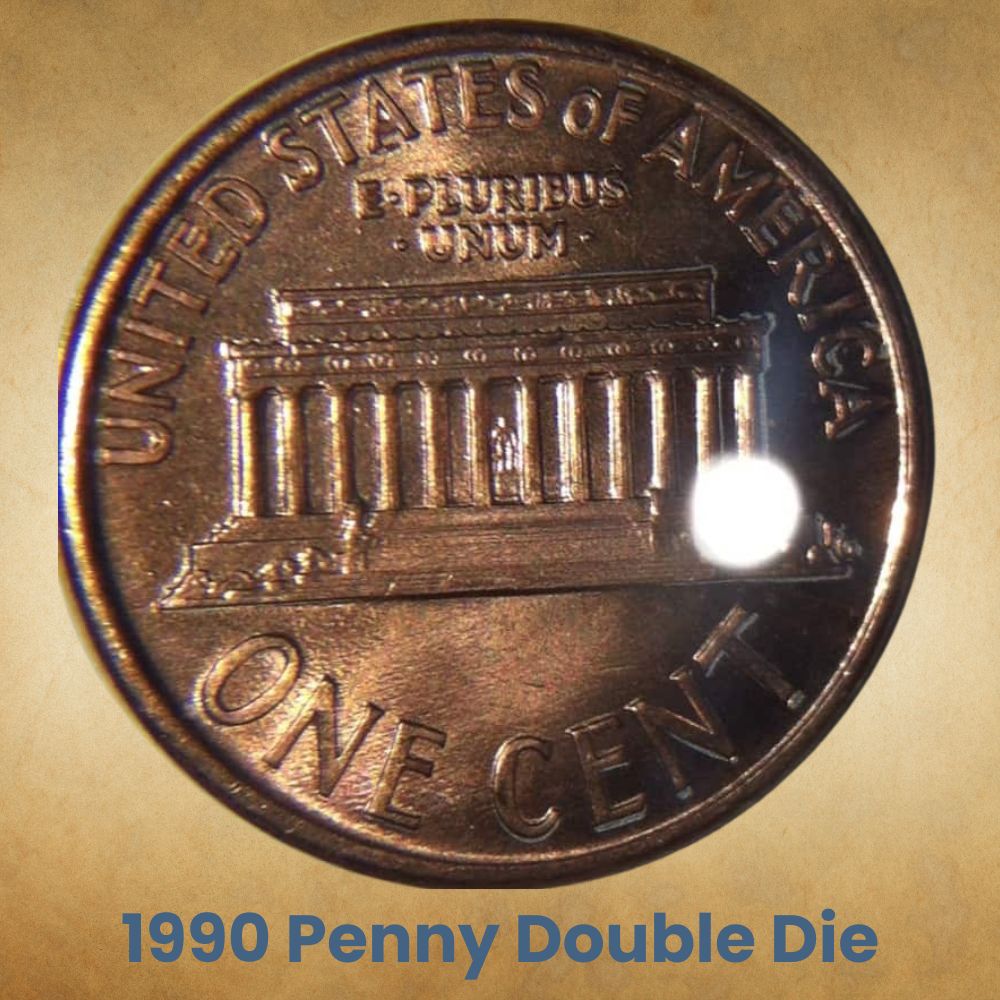
The 1990 penny can be found with a variety of double die errors. These occur during the hubbing process – i.e. when the hub is making the die. The hub has to strike the die several times to transfer all the details of the design. But if one of the strikes is in a slightly different position, the design is doubled.
There are at least six known varieties of double die 1990 pennies. In two types, the doubling is apparent on the obverse, and in four it’s on the reverse.
The obverse varieties include one with a notch on the bottom of the “R” in “In God We Trust”. Find one of these and, even ungraded, it will be worth from $2.50 to $10.
Another shows separation on almost all of the letters of “Liberty” and notches on the “1” and both “9”s in the date. These error coins can be worth from $25 for an almost uncirculated version, up to $125 for one graded MS65 red.
Double die errors on the reverse can be seen in the columns or steps of the Lincoln Memorial. Coins with these errors in mint state can be worth around $25.
1990 Penny Struck on a Bronze Planchet
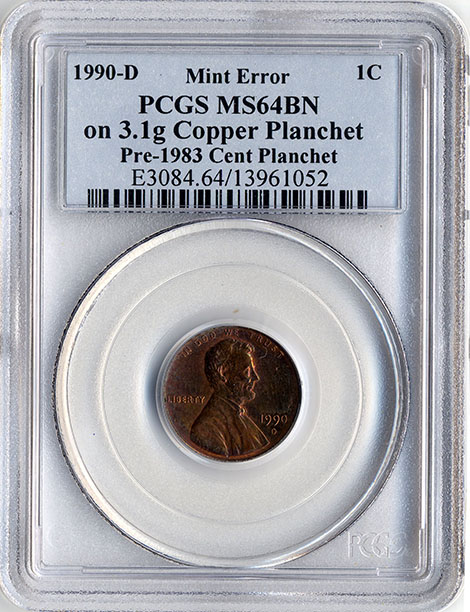
Do you remember that we said the Mint changed the composition of pennies from bronze to copper-plated zinc in 1982? Well, from time to time a few pennies after that date were still struck in error on bronze planchets.
If you find one of these, it’s worth a lot of money. You’ll know by the weight – it will weigh 3.1 grams instead of 2.5 grams.
A red-brown 1990 penny struck on a bronze planchet sold at auction in 2021 for $4,300. It’s the latest known example of this error.
These types of errors are known as “transition errors”. This YouTube video explains more about them as they relate to the 1990 penny.
Related Posts: 19 Most Valuable Lincoln Memorial Penny Worth Money
History of the 1990 Penny
The Lincoln Penny, also known as the Lincoln Cent, was first struck way back in 1909. At that time, the reverse of the coin carried a design of two sheaves of wheat. The design was known as the “wheatsheaf penny”.
But after 50 years, it was considered time for a change. The wheatsheaf was replaced with a depiction of the Lincoln Memorial. The new design was issued on February 12, 1959. The date was no coincidence: it marked 150 years since Lincoln was born.
The design remained in place until 2009. Every 1990 penny carries the image of Lincoln on the obverse, and the Lincoln Memorial on the reverse. You may sometimes see it referred to as the Lincoln Memorial Penny, or the “modern Lincoln cent”.
The composition of the coins changed over the years too. This was largely a result of the rising price of copper. In 1981, the Mint decided to change the coins from bronze to copper-plated zinc. That meant far less copper was needed for each coin.
You can easily tell the difference between the two types of coin when you hold them. Pennies from 1982 onwards are lighter than their earlier counterparts. And if you bounce them off a wooden table, the earlier coins ping, while the copper-coated zinc ones have a plasticky sound.
The 1990 penny was minted in huge numbers by all the mints – Philadelphia, Denver and San Francisco. In all, almost 12 billion coins were struck, with more than half minted in Philadelphia. That’s why most are worth no more than their face value today.
Related Posts: 19 Most Valuable Wheat Penny Worth Money
how to identify 1990 Penny
The Obverse of the 1990 Penny
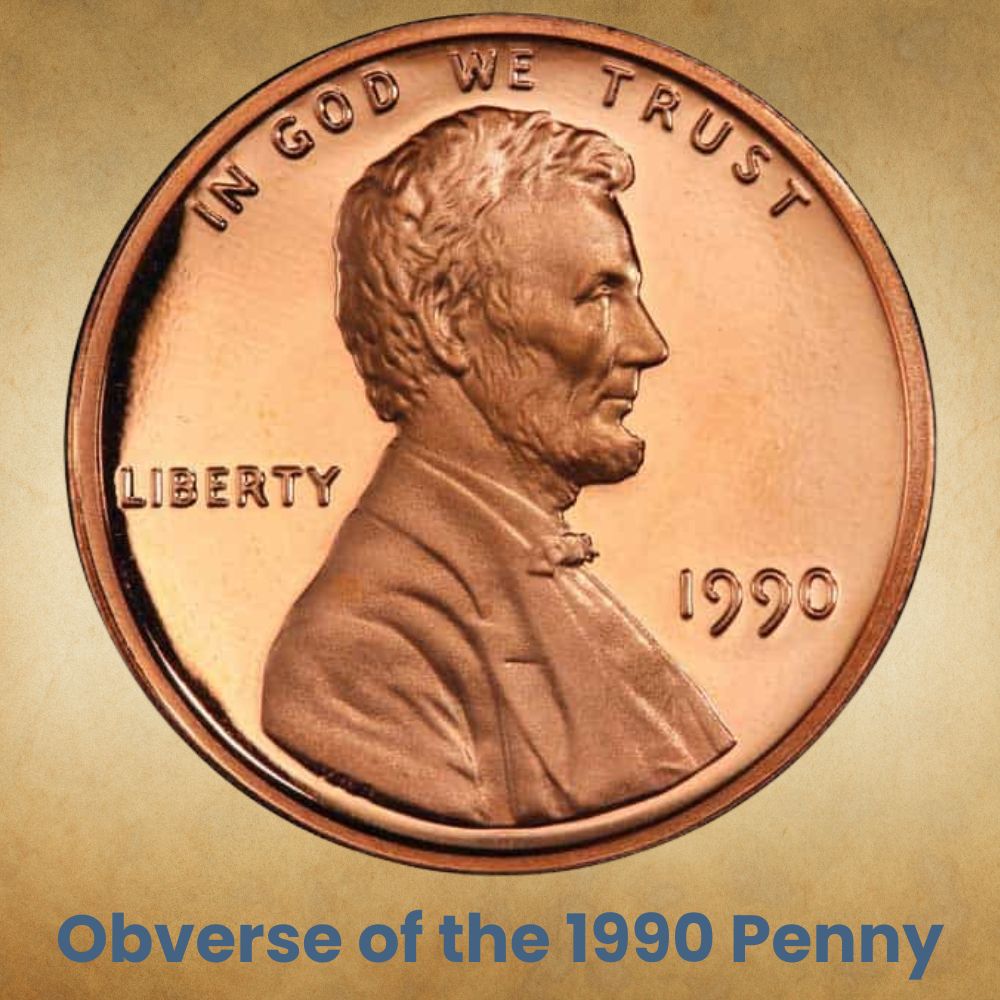
The obverse – or front – of the 1990 penny carries the image of President Abraham Lincoln. The first coins to bear the portrait were minted in February 1909 to mark 100 years since his birth.
It was the first time that coins produced for regular circulation had carried the image of a real person. (Lady Liberty, of course, had appeared frequently.)
The portrait was sculpted by a man called Victor David Brenner. Brenner said it depicted Lincoln as he imagined he would look when reading to a child. This, he believed, would be when Lincoln was at his most engaging.
The first pennies carried Brenner’s initials next to the portrait. But this led to controversy, with some seeing it as advertising. Brenner’s initials were removed well before 1990, despite his protests.
The obverse of the 1990penny also carries the motto “In God We Trust” above the portrait. The legend “Liberty” appears to the left, behind Lincoln’s neck. And the date is stamped lower down on the right.
The Reverse of the 1990 Penny
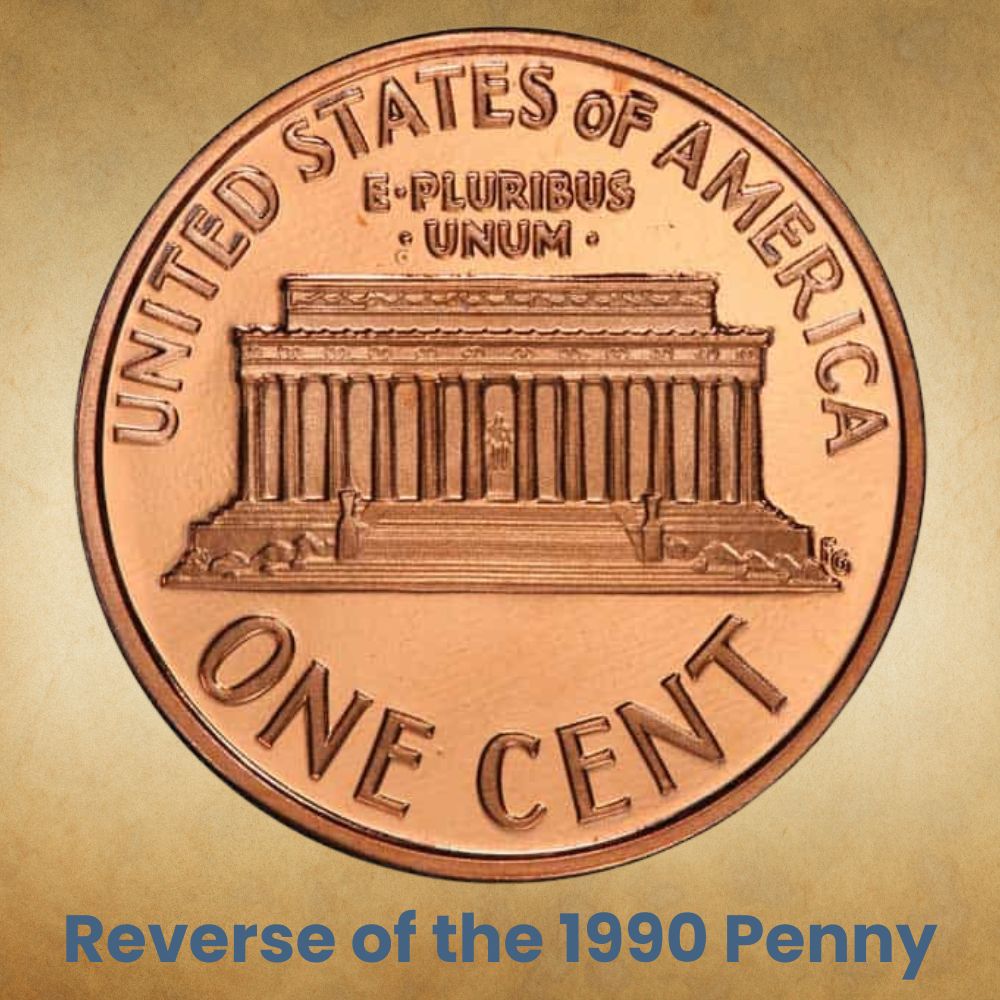
The reverse carries the image of the Lincoln Memorial produced by Mint engraver Frank Gasparro. Gasparro himself had never visited the Memorial, and opinions of the quality of the image vary widely. One eminent numismatist, Don Taxay, likened it disparagingly to a trolley car.
Above the picture of the Memorial, “United States of America” curves around the top of the coin. Beneath that is the motto “E pluribus unum”, Latin for “out of many, one”. The “many” here are the states, from which come a single nation.
At the bottom of the coin is the denomination of “One cent”. As with the obverse, all the text is in upper case.
Other Features of the 1990 Penny
The 1990 Penny comes in three different color designations: brown, red and red-brown. There’s considerable variation in the values of all three shades, with red generally being the most sought-after.
Other variations also increase the rarity, and hence the value, of the coin. Some coins show a double strike on the obverse, for example, and others on the reverse. You can see some of them in this YouTube video from Treasure Town.
FAQs
What makes a 1990 penny rare?
Most 1990 pennies aren’t rare or valuable. But an error – like a double strike, or a 1990 penny overstruck on another coin – is a different matter.
Obvious errors will be easy to spot. But double strikes require a keener eye. So look closely for notches on lettering, or double lines around the bays or steps of the Lincoln Memorial.
One of the rarest 1990 pennies of all is the proof coin from San Francisco without a mint mark. Only around 200 of these are known to exist.
Which 1990 penny is worth a lot of money?
The most valuable 1990 penny ever sold at auction was a proof coin minted in San Francisco without a mint mark. It was graded a “deep cameo”, meaning there was a beautiful contrast between the reflective fields and frosted devices. It sold at auction in 2007 for almost $21,000.
The best quality uncirculated coins from the different mints can also fetch big money. The finest known examples from the Denver Mint are graded MS69 and have sold for between $3,000 and $7,200.
How much is a 1990 penny with no mint mark worth?
It depends whether your penny was minted at the Philadelphia or the San Francisco mint.
The Philadelphia pennies were produced in huge numbers for circulation. Unless they’re in exceptional uncirculated condition, they’re worth no more than their face value.
But the pennies produced in 1990 at San Francisco were proofs, destined for the sets of collectors. They should have had the “S” mint mark, but an error meant that some did not.
You can tell the difference by the quality of the strike and the planchet. If your 1990 no mint mark penny has highly reflective fields, frosted devices, and a crisp strike, you might be in luck!

I actually have a few my grandpa left me his collection of coins. I have a lot of error coins for sale 931-531-2133
I have a no mint mark 1990 penny, the number “0” in 1990 looks like it’s a double die and the lettering in the word “u s” in trust , looks like double die also, or that’s just a normal penny?